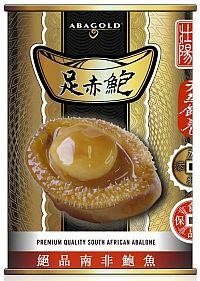Yellowwood Future Architects redesign boosts Abagold share of China
Marketing 142

When a local perlemoen brand asked Yellowwood Future Architects to undertake a repackaging exercise targeted at the Chinese market, the challenges seemed as insurmountable as the Great Wall itself. However, the expert marketing consultancy embraced the task, even if it meant coming to grips with an ancient and complex culture.
Abalone (perlemoen) is a delicacy in the East. A symbol of wealth and prosperity in Eastern culture, it is extremely expensive and highly prized. This is particularly so for the South African species, which is organically farmed in tanks on a farm in Hermanus, and exported under the Abagold brand name.
Yellowwood had previously written the strategy behind the Abagold brand, which included an in-depth market insight project in the abalone sector. Abagold called on the consultancy again to redesign its brand image and packaging to help grow its market share, and position the brand to better realise its potential.
“That potential lay in the super premium market,” says Richard Stone, the group creative director on the project. Super premium abalone is always dried, but the majority of the Abagold crop was being shipped in tins, which retail for less. The small portion of the Abagold crop which was being sold dried was sold in non-descript black boxes, with poorly die-stamped gold lettering – certainly not making the super premium grade.
While the way forward was simple to sum up – to ‘premium-ise’ the packaging – the actual execution would prove much trickier, since the Yellowwood team would be working in a very complex cultural milieu, of which it knew very little.
The process of transforming the Abagold packaging began with the reworking of the logo, symbol and logotype, to give them a premium look.
A Chinese name for the product was also needed. “The Chinese do not recognise the word Abagold, so we had to find a name which would conjure up the right images about the product,” says Stone. Language experts suggested Zu Chi Bao, or “pure gold abalone”, a name which the team felt had the right connotations, as they wanted to associate the brand with gold.
“Gold is precious, rare and valuable, inherently South African, and associated by the Chinese with good luck,” says Stone. “It was therefore an ideal way to make the Chinese consumer understand the value of the product.”
Finally, authentication, essential for any super premium brand, was added to the packaging, based on the traditional Chinese wax seal and coin, and bearing messages about the health benefits and quality of the product.
The new Abagold super premium packs are currently being launched into China, and the initial response from the market has been extremely good. The new packaging has enabled Abagold to fetch a far higher price for its dried product, proving that good design can achieve improved bottom line results for a brand.
“It’s been a real challenge, but we now have a greater understanding of designing for the complex Chinese market,” says Sylvia Swart, design director. “We hope to use this learning to help other clients corner a piece of this rapidly growing economy, specifically in the super premium market.”
About the author
This is only some dummy text because I dont really know what to write. This is only some dummy text because I dont really know what to write. This is only some dummy text because I dont really know what to write.